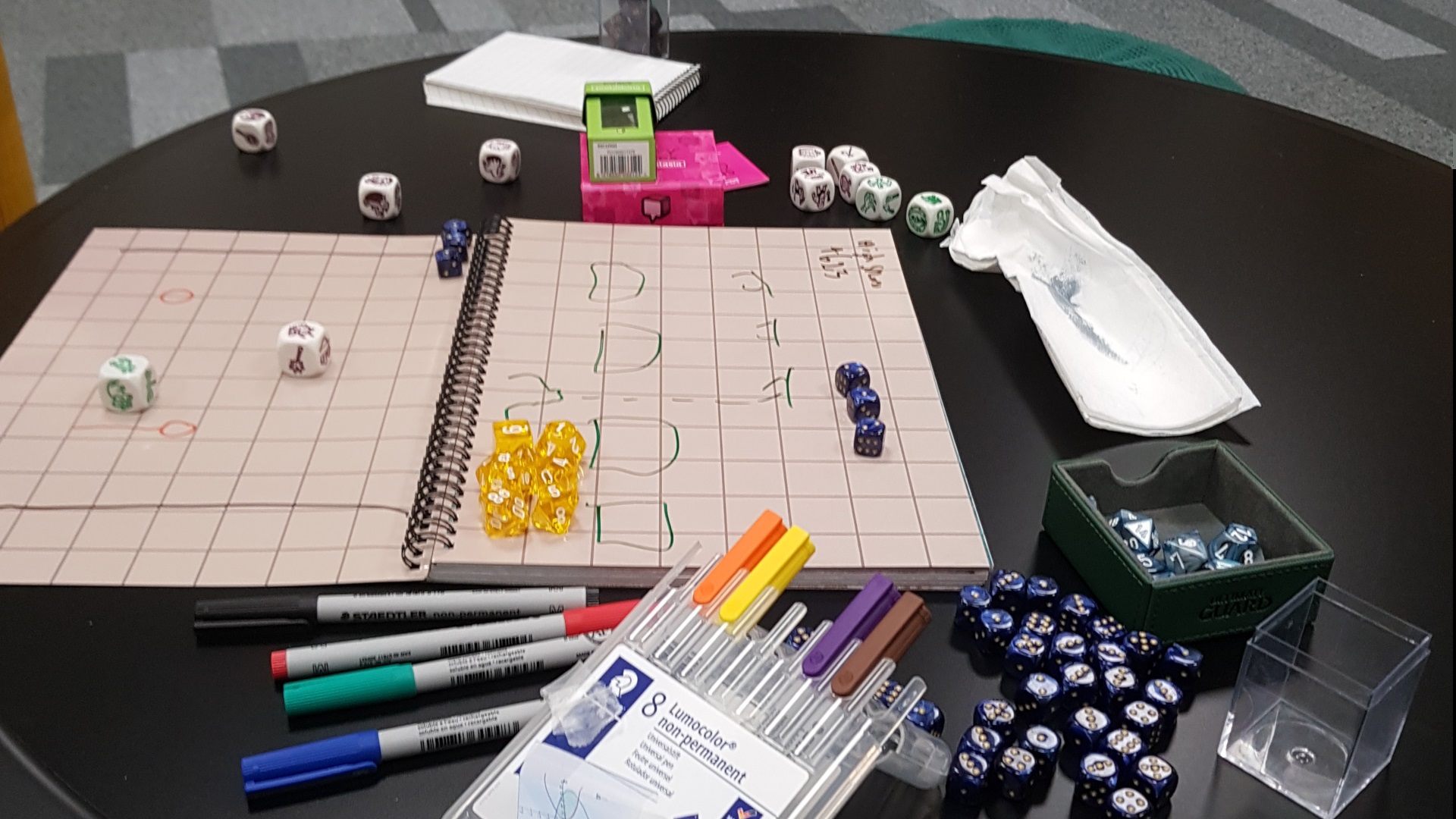For this award-winning school project I took a leading role and produced some very meaningful paperwork.
Retro Roach Repairman
Project Scope
9 people over 2 weeks (school course)
Platform & Engine
PC - Unity
Genre & Theme
Action - Arcade
Story Summary
In a dark and damp corner of video-game history, Rikki the cockroach is aiming for the high-score. Can he reach it before the machine shuts down for good?
Warning!
This project was a real schlager to work on. To this day I'm still proud of it and I do think the bias shows.
My Work

Capturing the Essence
For the brainstorming, rather than start off with ideas, we asked ourselves what makes an arcade experience good. Once we had agreed on that, we started with the ideas. This approach meant we had a clear goal from the start, which I think came with a lot of benefits; like a sense of common cause and a better understanding for eachother.

Paper-prototype
Once we had decided on the cockroach idea, work began on a paper-prototype to create lots of interesting mechanics. I have assembled a special toolkit which makes this super easy. And to solve the issue of our prototype not being real-time, I acted as Game-Master while my colleague played. This version had ant-trails, a spider and a machine that breaks down.

Planning Ahead
One potential issue I identified early with our design was player-focus. The game essentially forces the player to focus on two games at once, and I didn't know if that was possible. So to combat this risk, I began writing plans for all thinkable scenarios, such that we would immediately know what to do once the results from the first playtest dropped.

Cutting the project down...
When we pitched our work to the rest of the team they loved it, especially the spider (pictured is my programmer-art implementation). This just made it all the more sadder when we realised we had overscoped. In fact, not even our "minimum" viable product would be feasible to make.
In this case, responsibility fell on me to cut unnecessary features. This was not easy for me, but a scaled down game will always be better than a half-finished one, so I just did what I had to do.

...for the better?
Near the end of the project, we found ourselves done with the assets much earlier than expected. At this point we could have gone for the spider, as requested by one of our artists. However, at this stage I simply said "No.", and instead work was put on polishing what we already had.
In hindsight I would have approached the issue less cold-heartedly today, but ultimately I think I made the right call. Adding the spider at this late point would have been a huge risk, and when I saw the new animation for getting shocked (especially as part of the trailer), I just loved it.
The End
In the end we didn't manage to produce the first playable fast enough to iterate much on it, but luckily it just worked. However, as predicted the jury commented that our work was a tad derivative, not the idea as a whole, but at least the arcade part of it. Still, our innovation and strategy landed us the jury's choice, and we were nominated in all other categories as well.

Final Reflections - Work
The high I experienced from working on this project was immense. Coming down from it to write this reflection was a challenge in and of it itself.
But working this hard took a toll on me and if I am to make it in this industry I need to find balance. In turn this has made me more cautious, but I now handle longer projects far better.

Final Reflections - Design
This project really showed me the power of going above and beyond on a single feature. Had we gone ahead with the spider, Rikki's absolutely delightful shock-animation would never have happened. And I just can't imagine this game being as eye-catching as it is without it.
However, at the same time I think the complexity of juggling these two games at once is what made it captivating in the long run. So all in all it's hard to write rules, because there will always be exceptions.